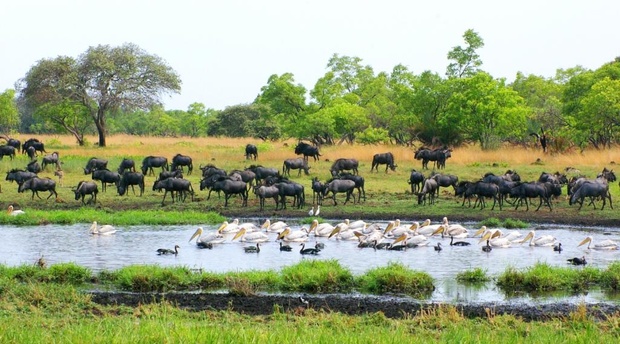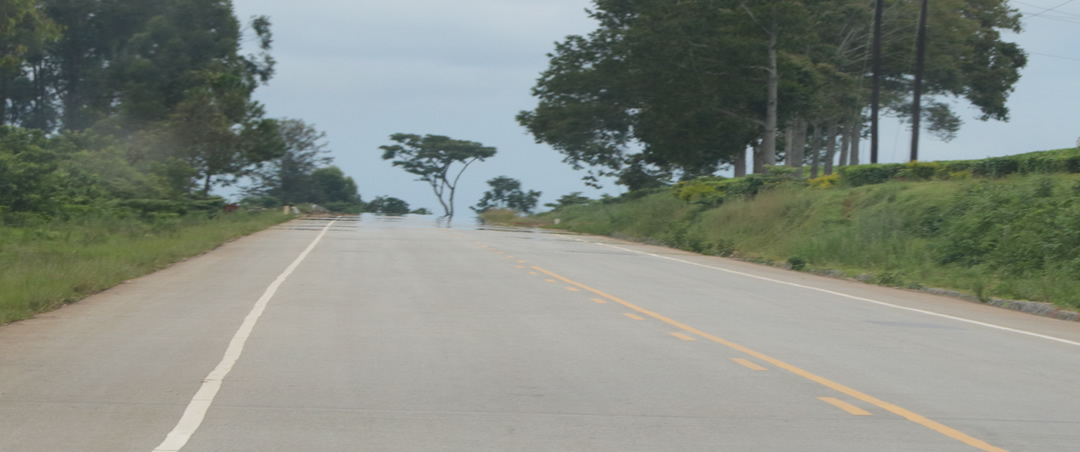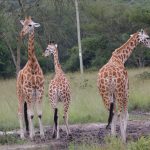
If you are used to encountering wildlife species within thronged Protected Areas, that is not what you will experience within the National Parks in Zambia. This country has many beautiful places that are still unexplored hence making them maintain their original appearances as they were years back.
Situated at the heart of western Zambia is the country’s oldest and largest Park gazetted in the 1950s and extending for 22,400 square kilometers (8600 square miles-almost the same size as Massachusetts or Wales) over three Provinces including the southern, north-western, and Central Provinces. With such an enormous size, Kafue is the second largest National Park in Africa and was named after River Kafue. Regardless of its size, it is one of the easily accessible Conservation Areas in the country-about 2 hours drive from Livingstone but remains one of the less-known and generally unexplored places with extensive areas of its virgin bushlands still untouched.

Kafue became a Protected Area in 1924 after the British Colonial Government moved the traditional owners of the area-Nkoyo people of Mwene Kabulwebulwe from their ancestral hunting grounds into Mumbwa District in the East and was awarded the National Park status in 1950 by the legendary Norman Carr (19th July 1912-1st April 1997), a British Conservationist working within Southern and Central Africa.
- Climate of Kafue National Park
The average annual rainfall in this Park varies from 510 millimeters on the southern side to more than 1020 millimeters on the northern side, and the average annual temperature is 21 Celsius Degrees but the mean maximum rises to 33 Celsius degrees in October, which is the hottest time of the year.
- Flora and Fauna within Kafue National Park
The largest part of the Park lies in the Central Zambezian Miombo woodlands ecosystems characterized by savannah grasslands dotted with Miombo tree species growing densely in some areas and a few small dambos (grasslands that become marshy in the rainy season) scattered among them. Due to its large size, the wide range of habitats/ecosystems and the fact that it is not frequently visited like National Parks in other countries, the National Park holds an overwhelming diversity of wildlife species that you will never experience in other places. The Zambezian flooded grasslands including the Busanga swamp and plains support herds of herbivores and their predators.
This National Park has an overwhelming range of antelope species including large herds of Puku and red lechwe as well as smaller herds of blue wildebeests and zebras within the Busanga Plains around June to September when it is a dry season. Across the northern part of the National Park is a wide range of mixed bushland ecosystems where Defassa waterbucks, kudus, duikers, elands, Grysbok, bushbucks, elands, and bushbucks are frequently spotted within the Kafue National Park.
Also, the pride of lions and leopards is widespread all over the National Park, especially in the forested areas. Although not frequently seen within the open plains, the park is also a home to the cheetahs, spotted hyenas, and Cape wild dogs and the Park is one of Zambia’s best strongholds for these animals. River Kafue and its tributaries are generally a hive of activities and home to schools/pods of Hippos and some of the largest Crocodiles within Southern Africa. Also, buffaloes, elephants, and antelopes are commonly seen along River Kafue and around Lake Itezhi-tezhi.

With over 490 species of birds recorded within Kafue National Park, it is a wonderful birding spot offering species such as Kori Bustards, barbets, brown-headed Apalis, wattled cranes, Ross turaco, Ibis, secretary birds, Olive woodpeckers, yellow-throated leaflove, storks and geese among others. A boat ride on River Kafue offers opportunities of seeing African skimmers, Pale-billed hornbills, African fin foot, and grey tit while the miombo woodlands offer chances of seeing spotted creepers, Sousa’s shrike, chestnut-mantled sparrow-weavers, black-cheeked lovebirds and miombo pied barbets among others.
- Safari Activities within Kafue National Park
Activities offered within this Protected Area include walking safaris, fishing, bird watching, game drives, balloon rides/flights, boat rides, and guided nature walks among others.
- Accommodation Facilities within Kafue National Park
Kafue National Park has a few accommodation facilities that include Busanga Plains Camp, one of the Park’s gems, and is operated by Mukambi Safaris which also operates other properties in the Park including Fig Tree Bush Camp and Mukambi Safari Lodge. Other facilities include Lla Safari Lodge, Hippo Bay Campsite, Pinnon Lodges, McBrides’ Camp, Kantunta Lodge, Musekese Camp, KaingU Safari Lodge, Mawimbi Bush Camp, Nanzhila Plains Safari Camp, Shumba Camp, Mayukuyuku luxury Bush Camp, Kasabushi Camp and Konkamoya Lodge among others.


